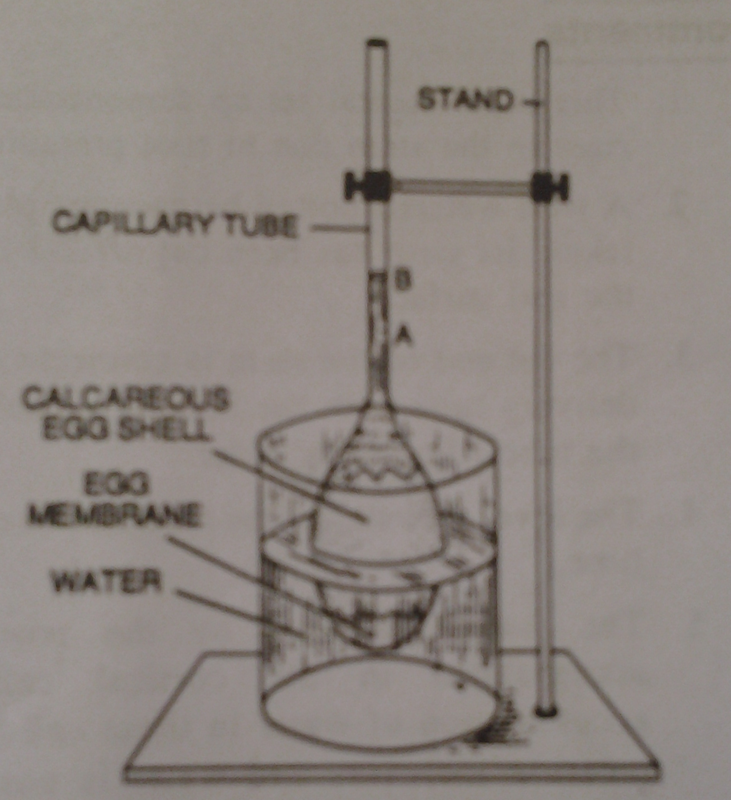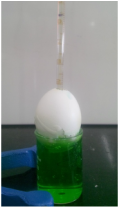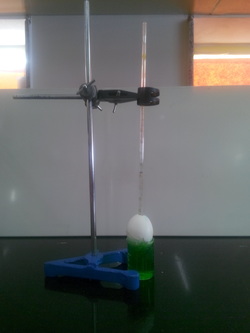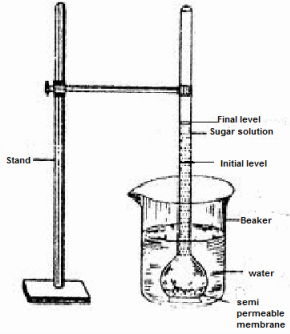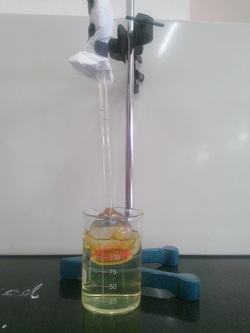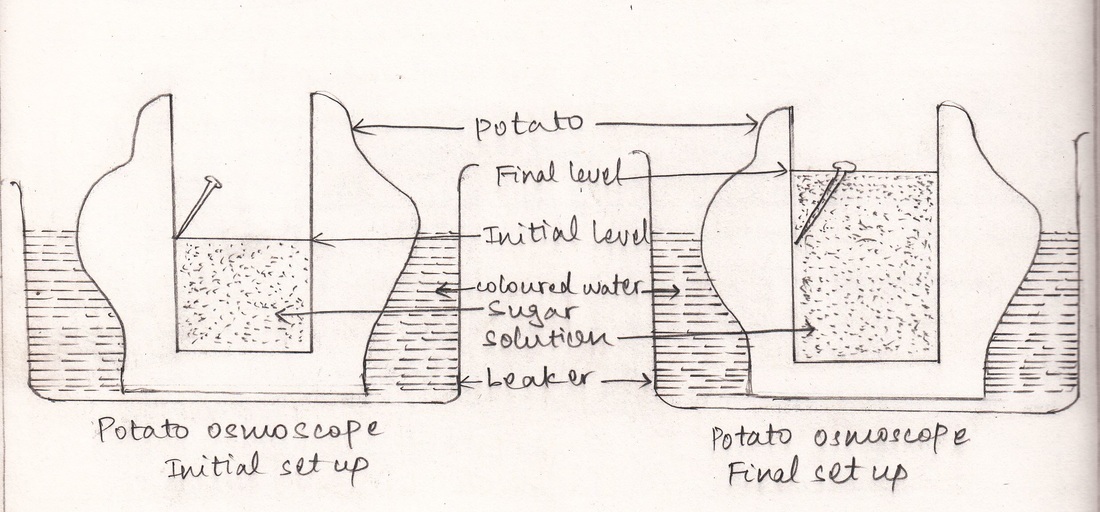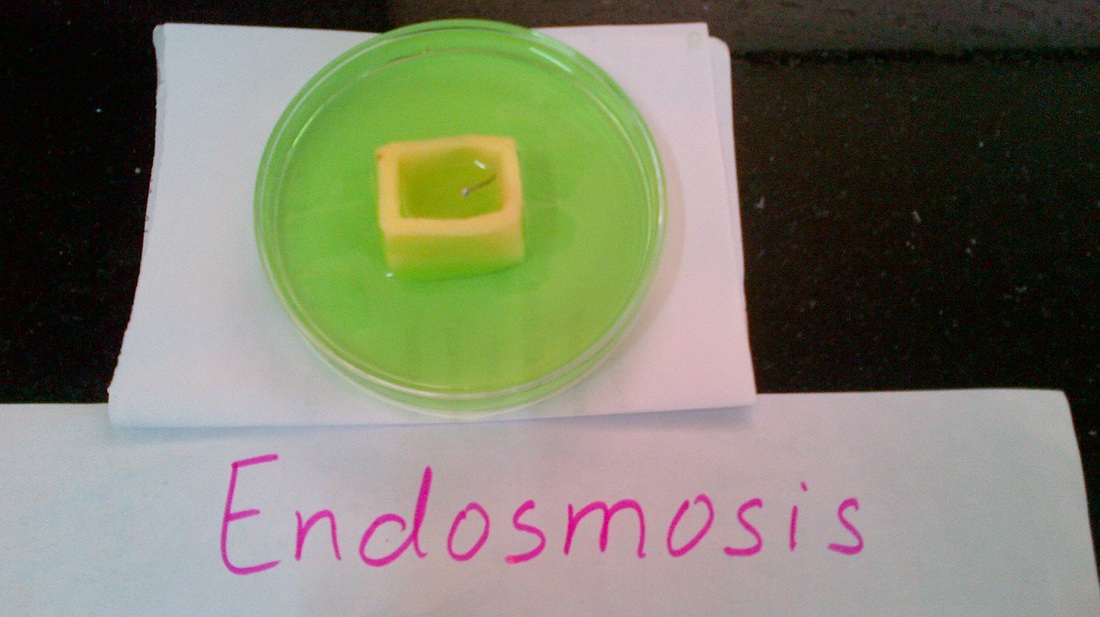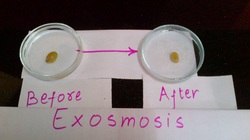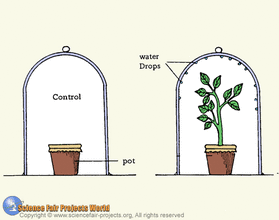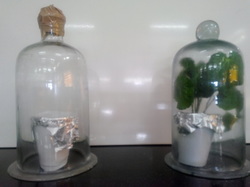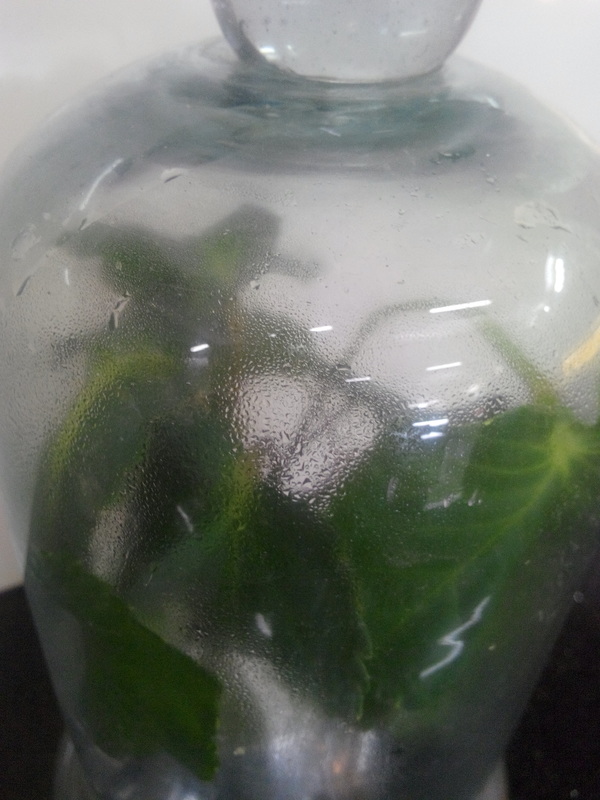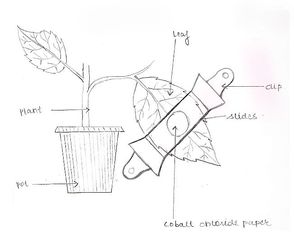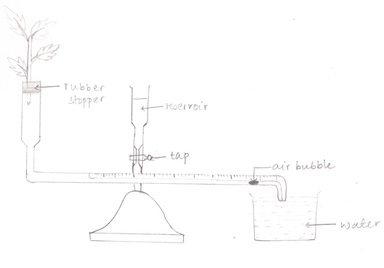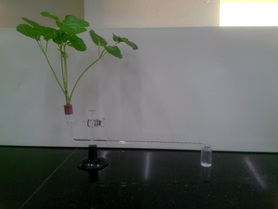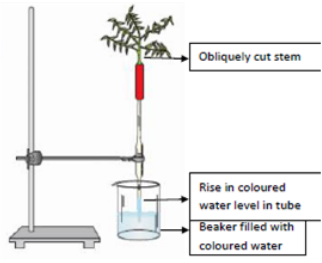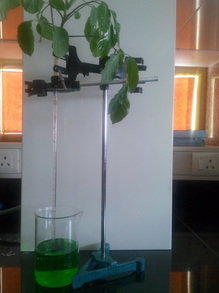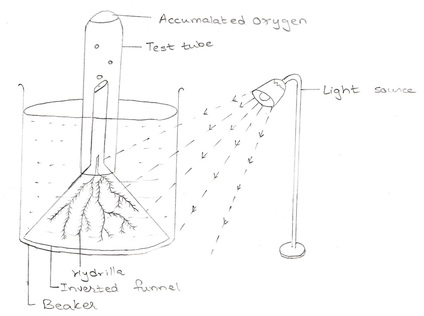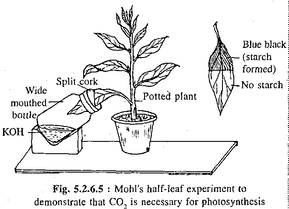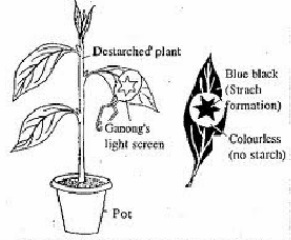ISC-12>PRACTICAL>OBSERVATION>PLANT PHYSIOLOGY
STUDY OF BIOCHEMICAL AND PHYSIOLOGICAL EXPERIMENTS
AIM: To observe and comment on the different physiological process in plants.
I.EXPERIMENTS RELATED TO OSMOSIS
A. Experimental set up to demonstrate osmosis by egg osmoscope.
|
Comments for identification
A beaker filled with water, Egg filled with hypertonic solution , capillary tube inserted in egg, stand, marking of final and initial levels |
B. Experimental setup to demonstrate osmosis by thistle funnel method.
C. Experimental set up to demonstrate the process of endosmosis by potato osmoscope.
|
Comments:
|
D. Experimental setup to demonstrate the process of exosmosis by grapes
II. EXPERIMENTS RELATED TO TRANSPIRATION
A. Experimental setup to demonstrate the phenomenon of transpiration.
B. An experimental set up to demonstrate unequal transpiration from the two surfaces of dorsiventral leaves.
|
Comments
Drawing to show (NOT TO BE WRITTEN IN THE JOURNAL) Leaf attached to the potted plant, cobalt chloride paper on both the sides of the leaf, glass slides covering the CoCl2 paper, rubber band or clips fixing the glass slides. |
C. An experimental set up to measure the rate of transpiration by Ganong's potometer.
|
Comments:
|
D. An experimental setupp to show transpirational pull.
|
Comments :
|
III. EXPERIMENTS ON PHOTOSYNTHESIS
A. An experimental set up to show that oxygen released during the process of photosynthesis.
|
Comments:
Drawing to show.(NOT TO BE WRITTEN IN THE JOURNAL)
Oxygen bubble, water, light source, Hydrilla, beaker, funnel, test-tube. |
B. An experimental set up to show that CO2 is essential for photosynthesis by Moll's half leaf experiment.
|
Comments:
Drawing:(NOT TO BE WRITTEN IN THE JOURNAL)
|
C. An experimental set up to show that light is essential for the process of photosynthesis.
|
Observation :
Drawing : (NOT TO BE WRITTEN IN THE JOURNAL)
|
